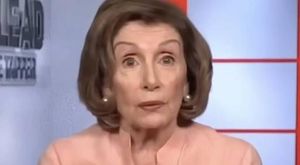As the leaves begin to turn and the chill of autumn sets in, public health officials across the United States are sounding the alarm: now is the time to get vaccinated. With October marking the start of flu season and a new wave of COVID-19 and other respiratory viruses looming on the horizon, both national and local leaders are urging Americans to protect themselves and their communities by getting up-to-date on their shots.
On Monday, October 20, 2025, the Big Cities Health Coalition—a group representing public health leaders from two dozen of the nation’s largest cities—released a forceful statement underscoring the urgent need for vaccination. Their message was clear and direct: “We are united behind a simple message: get vaccinated.” The coalition, which includes leaders from cities in both Democrat- and Republican-led states, stressed that falling vaccination rates are fueling the resurgence of once-controlled diseases like measles and polio. According to their letter, “Vaccination has saved millions of lives, but falling vaccination rates across the country have led to more frequent outbreaks of devastating diseases such as measles and polio.”
The timing of the coalition’s call to action is no coincidence. As Professor Rebecca Wurtz of the University of Minnesota School of Public Health explained, the Centers for Disease Control and Prevention (CDC) recently updated its COVID-19 vaccine recommendations for the 2025-2026 fall and winter seasons. The Food and Drug Administration (FDA) has approved an updated COVID-19 vaccine, and as of early October 2025, anyone over the age of six months is eligible to receive it. “COVID-19 vaccines—including the updated vaccine approved by the FDA for use this fall and winter—are incredibly safe and effective while minimizing symptoms and contagiousness associated with COVID-19 infections,” Professor Wurtz told the University of Minnesota’s news service.
But despite these advances, the landscape of public health messaging has grown more complicated. According to CNN, the coalition’s statement was also a direct response to mounting concerns about federal policies that some leaders say are making it harder for people to access vaccines. “We are deeply troubled by the repeated false claims about vaccines from too many federal officials, which have contributed directly to these trends,” the coalition wrote. They also criticized recent changes to recommended childhood and adult immunization schedules, arguing that these changes “unnecessarily limit access to vaccines.”
One particularly controversial move came last month, when vaccine advisers to the CDC voted to recommend against the use of the combined measles, mumps, rubella, and varicella (MMRV) vaccine for children younger than four years old. This decision, and the broader debate about vaccine scheduling, has prompted the formation of a new working group to more closely examine the safety, effectiveness, and timing of childhood immunizations. The result, some public health leaders fear, is confusion and hesitation among parents and patients alike.
This uncertainty is playing out against the backdrop of a rapidly approaching respiratory virus season. Experts warn that the coming months will bring a heavy wave of COVID-19 and flu infections, making timely vaccination more important than ever. “The risk of COVID-19 infection is certainly lower than it was in 2020 due to increased immunity from vaccinations and previous infections, but the disease continues to kill people in the U.S., causes Long COVID, and causes people with an infection to cancel work, social plans and travel. Boosters make all of those negative outcomes less likely,” Professor Wurtz emphasized.
For families wondering when to get their shots, Professor Wurtz offered clear guidance: the ideal time to receive a flu vaccine is right at the start of the flu season, usually in early October. The protective effects of the flu vaccine last about six months—the typical length of the flu season. For people at high risk for serious flu infections, including those over 65 and anyone with lung or heart problems, a second dose may be recommended if the season drags on longer than usual. And yes, it’s perfectly safe to receive both the flu and COVID-19 vaccines at the same visit. “There is not currently a combined shot that covers both viruses,” she noted, but getting both at once is both safe and convenient.
Access to these vaccines remains broad. Shots are available at healthcare providers’ offices, special vaccine clinics, employer-provided workplace vaccination sites, and pharmacies. Some of the nation’s largest pharmacy chains, such as CVS, have streamlined the process so that a conversation with a pharmacist is only required if patients have specific questions. “The only expectation is for an individual to discuss whether the vaccine makes sense for them with a health professional,” Professor Wurtz explained, adding that this could be a doctor, nurse, physician assistant, or pharmacist.
But the push for vaccination is not without its challenges. The Big Cities Health Coalition’s statement highlighted the growing politicization of vaccines and the resulting erosion of public trust. Dr. Phil Huang, director of the Dallas County Health and Human Services Department, told CNN, “We have to make our public health decisions based on data and not on political ideology. We have to be the voices for that science and reason.” The coalition’s letter also pointed to the importance of keeping schools open and safe, noting that vaccines “keep classrooms safe and schools open. They allow children to spend time with friends and enjoy their favorite activities. They help parents and caregivers work to support their families.”
Recent outbreaks underscore the stakes. In South Carolina, more than 100 unvaccinated students are currently in quarantine after exposure to measles at school. “A measles outbreak is growing quickly in the upstate region of South Carolina, just about 100 miles from Charlotte,” Dr. Raynard Washington, director of public health for Mecklenburg County, North Carolina, told CNN. “As a country, our local public health system is only as strong as the weakest county or jurisdiction. There is an importance of ensuring that we work collaboratively, because the boundaries that we actually exist in are only administrative.”
Meanwhile, public trust in the CDC has reached its lowest point since the COVID-19 pandemic began. According to a recent KFF poll cited by CNN, only half of American adults now say they trust the agency to provide reliable vaccine information, down from 57% in July and 63% in September 2024. The US Department of Health and Human Services responded, stating, “Vaccines can be an important tool to prevent disease, especially for the vulnerable. We are restoring the doctor–patient relationship so people can make informed decisions about their health with their providers.”
Despite the chaos and mixed messages, city health leaders remain steadfast. “Despite all the chaos and mixed messages, we remain steadfast in our commitment to the health of our communities and making sure the message is clear on the importance of vaccination,” Dr. Huang said. As the respiratory virus season approaches, their message is more relevant than ever: vaccines are safe, effective, and essential for keeping communities healthy and resilient.
With so much at stake this fall and winter, Americans are being urged to cut through the noise, consult with trusted health professionals, and get vaccinated—not just for themselves, but for the good of everyone around them.





